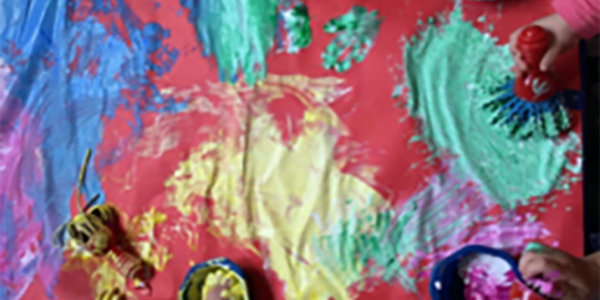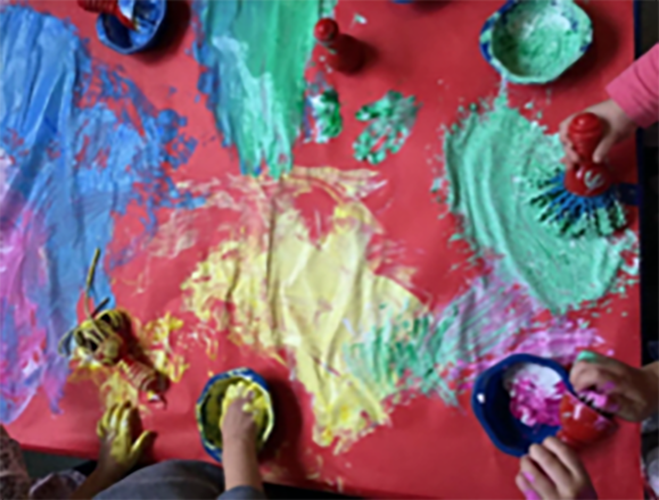Individuality and Inclusive Practices for Early Childhood

You are here
With great anticipation and excitement, the fourth edition of the Developmentally Appropriate Practice in Early Childhood Programs book has arrived. This updated text is the culminating work of many, having drawn on the diverse voices and expertise within and outside of the organization.
This edition reflects both similarities to and changes from past position statements and books on developmentally appropriate practice (DAP). For example, the three core considerations—knowledge of principles of child development and learning, knowledge about each child as an individual, and knowledge about the social and cultural contexts in which each child lives—continue to frame expectations for the work of early childhood professionals. However, a significant change is the emphasis on children’s, families, and educators’ social, historical, and cultural contexts. Alongside NAEYC’s initiatives toward advancing equity, DAP today means responding to a “call to action, committing to work collectively to address the ways in which current realities constrain the full potential of all young children as we continue to reflect and learn from multiple, diverse perspectives.”
This cluster of Young Children articles takes up that call by digging deeper into the core consideration of individuality and guidelines related to inclusion and individualized teaching and learning, offering in-depth descriptions of approaches to meet each child where they are. Individuality involves recognizing and being responsive to the unique strengths, interests, experiences, and needs of each child and family. By understanding that individual variations not only exist but should be expected, educators can plan for and implement inclusive practices and environments. Inclusion means that every child, with and without disabilities, can engage as fully as possible in their learning community and feel that they belong.
DAP encourages the use of Universal Design for Learning principles and practices to help create caring communities of learners and to teach to enhance children’s learning. Educators can plan, teach, and assess through multiple modes, strategies, and materials within everyday routines and activities. In collaboration with colleagues and families, effective educators “see that each child gets the adaptations and specialized services needed for full inclusion as a member of the community and that no child is penalized for their ability status.”
Throughout the cluster articles and in the Rocking and Rolling column, you will find direct connections to these specific concepts and practices, as framed by the position statement and the newest edition of DAP.
Opening the cluster, Christan G. Coogle, Emily R. Lakey, Jennifer R. Ottley, Jennifer A. Brown, and Mollie K. Romano define and elaborate on five steps to creating, carrying out, and evaluating "Embedded Learning Opportunities for Children with and Without Disabilities." This instructional approach helps educators integrate adaptations and supports into early learning programs, building from a child’s strengths to address targeted areas of focus.
Next, Alissa Rausch, Jaclyn Joseph, Phillip S. Strain, and Elizabeth A. Steed explore "Fostering Engagement Within Inclusive Settings: The Role of the Physical-Social-Temporal Environment in Early Childhood Settings." Through a series of vignettes, the authors identify key, yet simple, modifications that teachers made during everyday classroom situations to increase a focal child’s engagement in their learning environment.
Shifting to the concept of disability specifically, Sue Mankiw examines past and current perspectives related to "Teaching Young Children About Disability." Mankiw shares research about children’s developing ideas and beliefs about disability. Then, she outlines four specific ways to foster children’s positive attitudes and accurate knowledge about disability.
Accompanying this is a piece by Lori Erbrederis Meyer, who delves into "Including Disability in Early Childhood Curricula: Evaluating and Using Children’s Books." In addition to outlining guidelines for examining children’s books, Meyer presents five recently published texts that discuss and illustrate different disabilities that align with a strengths-based perspective.
The final two cluster articles broaden the lens on ability-appropriate practices. Alison Mellott describes an initiative for "Tearing Down Silos: A Model for Interagency Collaboration." Spanning across two counties and the coordination of professionals at the local and state levels, this model provides early learning programs, children, and families with prompt and responsive supports toward inclusion and the reduction of suspension and expulsion from early childhood settings.
Related to collaboration, in "Building Strong Family and Professional Partnerships from the Start: Highlights from the ASD Literature," Melissa A. Sreckovic, Tia R. Schultz, Christine K. Kenney, and Kelly Crenshaw highlight the essential role of family-professional partnerships in effectively educating and caring for children with diverse abilities, including children with autism spectrum disorder. Recognizing the complexities of such partnerships, the authors note commonly experienced barriers for families and educators during IEP meetings and implementation services. They also explain evidence-based, partnership-focused strategies for addressing each barrier.
This cluster of articles encourages you to consider potential transformations in approaches toward individuality and inclusive practices. Changes may be small, such as a modification made during snack time or daily morning meetings; changes may be significant, such as discussing disability openly and regularly over time. Changes may mean reconsidering how you coordinate or collaborate with colleagues and families.
There are many benefits to digging deeper into our thinking about and practices for children with different abilities. When we believe that every child can learn and every child belongs and we respond accordingly, we are enacting DAP.
—Annie Moses
Making Connections to DAP
NAEYC defines developmentally appropriate practice (DAP) as “methods that promote each child’s optimal development and learning through a strengths-based, play-based approach to joyful, engaged learning.”
The position statement includes three core considerations, nine principles of child development and learning, and six guidelines to help educators, administrators, higher education faculty, and others in making decisions and taking actions to align with DAP.
Close attention to and reflection on each of these components are necessary to fully understand and implement DAP. Reflecting on how DAP connects to classroom scenarios you read about, observe, or participate in also helps make the ideas and expectations described in the position statement and expanded upon in Developmentally Appropriate Practice in Early Childhood Programs: Serving Children From Birth Through Age 8, Fourth Edition more concrete and achievable.
This issue of Young Children was inspired by and aligns with the DAP position statement. It offers content to support readers in understanding and reflecting on specific concepts related to adapting approaches for children with a range of individual needs. More specifically, you will notice connections to the DAP principles and guidelines listed on page 6. As you read, think about the following reflection questions as you ask, “What does DAP look and sound like in action?”
- Which of the principles and guidelines are reflected in this article?
- How are educators making decisions as guided by the three core considerations?
- How do the ideas, practices, and materials described in this article apply in your own setting and teaching?
- Looking at the position statement, are there other important DAP concepts you see being addressed in these articles?
Key Concepts from the NAEYC DAP Position Statement
- Core consideration 2: Individuality—the characteristics and experiences unique to each child, within the context of their family and community, that have implications for how best to support their development and learning.
- Principle 4: Although general progressions of development and learning can be identified, variations due to cultural contexts, experiences, and individual differences must also be considered.
- Principle 8: Development and learning advance when children are challenged to achieve at a level just beyond their current mastery and when they have many opportunities to reflect on and practice newly acquired skills.
- Guideline 1, section A: Each member of the community is valued by the others and is recognized for the strengths they bring.
- Guideline 2, section F: Educators involve families as a source of information about the child (before program entry and on an ongoing basis).
- Guideline 3, section B: Assessment focuses on children’s progress toward developmental and educational goals.
- Guideline 4, section B: Educators use their knowledge of each child and family to make learning experiences meaningful, accessible, and responsive to each and every child.
- Guideline 4, section C: Educators effectively implement a comprehensive curriculum so that each child attains individualized goals across all domains (physical, social, emotional, cognitive, linguistic, and general learning competencies) and across all subject areas (language and literacy, including second language acquisition, mathematics, social studies, science, art, music, physical education, and health).
- Guideline 4, section F: Educators know how and when to scaffold children’s learning.
- Guideline 4, section H: Educators differentiate instructional approaches to match each child’s interests, knowledge, and skills.


Ms. Diuguid’s class of 2- and 3-year-olds explores with pastel paints. This is one of many art and sensory explorations done in her classroom to foster development across domains. As she shares, “Much of what we do is process with no product in sight.”
Is your classroom full of children’s artwork? To feature it in Young Children, see the link at the bottom of the page or email [email protected] for details.
 We’d love to hear from you!
We’d love to hear from you!
Send your thoughts on this issue, and on topics you’d like to read about in future issues of Young Children, to [email protected].
Would you like to see your children’s artwork featured in these pages? For guidance on submitting print-quality photos (as well as details on permissions and licensing),
see NAEYC.org/resources/pubs/authors-photographers/photos.
Annie Moses, PhD, is director of periodicals at NAEYC and serves as editor in chief of Young Children and Teaching Young Children.

